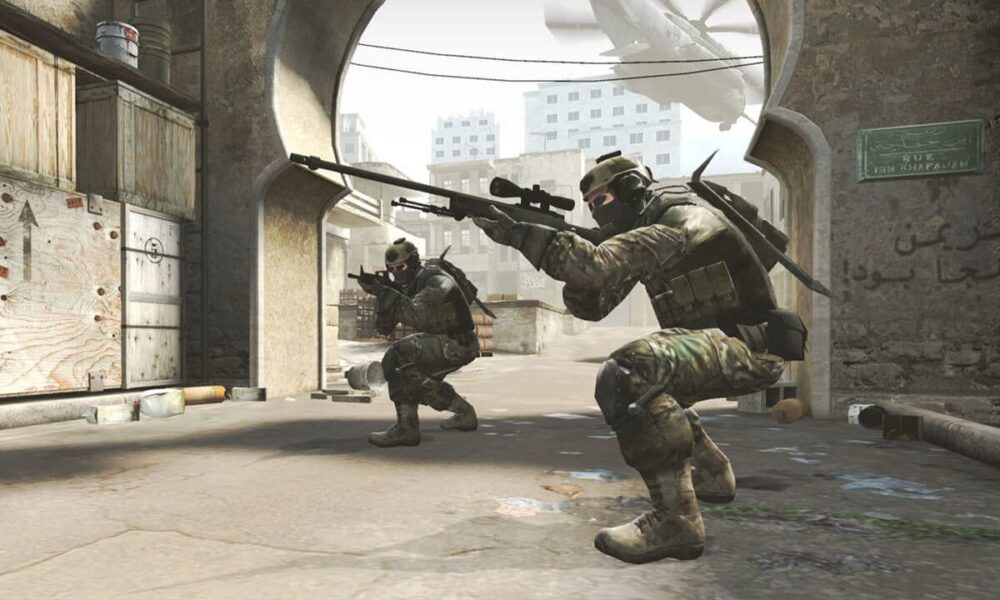
Introduction:
Counter-Strike: Global Offensive (CS:GO) is a first-person shooter game that has been around for over eight years and continues to be one of the most popular games in the esports industry. CS:GO was developed by Valve Corporation and Hidden Path Entertainment, released on August 21, 2012, as a successor to Counter-Strike: Source. The game features two teams, terrorists and counter-terrorists, who engage in a variety of objective-based game modes such as bomb defusal or hostage rescue.
One of the most significant aspects of CS:GO’s success is its gameplay mechanics. The development of gameplay mechanics in CS:GO has undergone several changes since its initial release. The introduction of new weapons and maps, adjustments to recoil patterns and movement mechanics have all contributed to the evolution of CS:GO’s gameplay.
Another notable impact that CS:GO has had is on the esports industry. It has become a staple title in competitive gaming with professional leagues such as ESL Pro League and DreamHack featuring it regularly. Esports tournaments attract millions of viewers worldwide with prize pools reaching up to $1 million dollars.
Exploring the history and evolution of CS:GO can provide insight into how this game became one of the most successful esports titles today. Through examining its development process, gameplay mechanics, and impact on the industry at large, we can gain a deeper understanding of how this game has captivated gamers for over eight years.
Development Of Gameplay Mechanics:
One of the most significant aspects of CS:GO’s evolution is the development of its gameplay mechanics. From its early beginnings as a Half-Life mod to its current iteration, several changes have been made to improve and refine the game’s mechanics. One of these changes includes the introduction of new weapons and equipment, such as grenades, flashbangs, and smoke grenades. These additions have revolutionized the gameplay experience by allowing players to use more strategic approaches when engaging with their opponents.
Another crucial change in CS:GO’s gameplay mechanics is the introduction of different game modes. Initially, players could only play bomb defusal mode, but over time, other modes like hostage rescue mode and deathmatch were introduced. These new modes added variety and excitement to the game while also catering to different player preferences.
The development of matchmaking also played a vital role in CS:GO’s evolution. The addition of matchmaking allowed players to be matched with others who shared similar skill levels, creating a more balanced playing field that was fairer for all participants. This improvement helped attract new players into the game while also ensuring that experienced players could continue enjoying challenging matches.
Moreover, Valve has consistently released updates aimed at improving gameplay mechanics further while addressing issues raised by players. For example, they introduced a feature called “Prime Matchmaking,” which required users to link their mobile phone numbers before being allowed to play ranked matches. This change helped reduce cheating in ranked games significantly.
CS:GO’s evolution has been marked by significant advancements in its gameplay mechanics; from introducing new weapons and equipment to different game modes and matchmaking improvements aimed at ensuring fairer matches for all users. The constant updates from Valve ensure that CS:GO remains relevant by keeping up with changing trends in gaming while maintaining its classic appeal among fans worldwide.
Impact On Esports Industry:
The emergence of Counter-Strike: Global Offensive (CS:GO) has had a significant impact on the esports industry. The game has become one of the most prominent titles in esports, with millions of players and fans worldwide. The competitive scene surrounding CS:GO has grown exponentially over the years, with major tournaments attracting thousands of spectators and offering million-dollar prize pools. This growth has contributed to the development of a professional esports ecosystem that includes teams, players, organizations, sponsors, and broadcasters.
One of the key factors behind CS:GO’s success in esports is its accessibility. The game is easy to learn but difficult to master, making it appealing to both casual and hardcore gamers alike. Additionally, its low system requirements mean that it can be played on a wide range of devices, further increasing its accessibility.
Another factor contributing to CS:GO’s success in esports is its spectator appeal. The game is fast-paced and action-packed, with intense firefights and strategic gameplay that keeps viewers engaged. Furthermore, the game’s spectator tools allow for easy viewing and analysis of matches from multiple perspectives.
The impact of CS:GO on the esports industry has been felt beyond just the game itself. Its success has inspired other developers to create competitive multiplayer games that are designed specifically for esports audiences. Furthermore, it has attracted interest from traditional sports organizations looking to enter the world of esports.
However, as with any rapidly growing industry, there are challenges that must be addressed. One such challenge is ensuring fair play in competitions by combating cheating and match-fixing. Another challenge is addressing player burnout caused by intense training schedules and constant travel.
CS:GO’s impact on the esports industry cannot be overstated. Its accessibility and spectator appeal have helped drive growth in competitive gaming while inspiring other developers to create their own titles for this market segment. However, as with any rapidly growing industry there are challenges that must be addressed if it is to continue to thrive.
Conclusion:
In conclusion, exploring the history and evolution of CS:GO has been an enlightening journey that sheds light on how this game has become a dominant force in the world of esports. The development of gameplay mechanics has been a critical aspect of this game’s success, as it has allowed players to immerse themselves fully in the game and enjoy an unparalleled gaming experience. From its early days as a mod for Half-Life, CS:GO’s gameplay mechanics have undergone numerous improvements such as map design, weapon balancing, and sound effects. These changes have made CS:GO more engaging and challenging for players.
The impact of CS:GO on the esports industry cannot be overstated. It has played a significant role in popularizing esports and contributing to its growth over the years. The game’s competitive scene is thriving with millions of dollars in prize money at stake each year. Its popularity among professional gamers and fans alike is testament to its status as one of the most successful esports games ever created.
In summary, exploring the history and evolution of CS:GO reveals how this game has come to dominate both the gaming industry and esports scene. Its development of gameplay mechanics has made it one of the most immersive games available today, while its impact on esports continues to grow with each passing year. As such, it is no surprise that CS:GO remains a popular choice for both casual gamers and professional players alike. click here to learn more.



